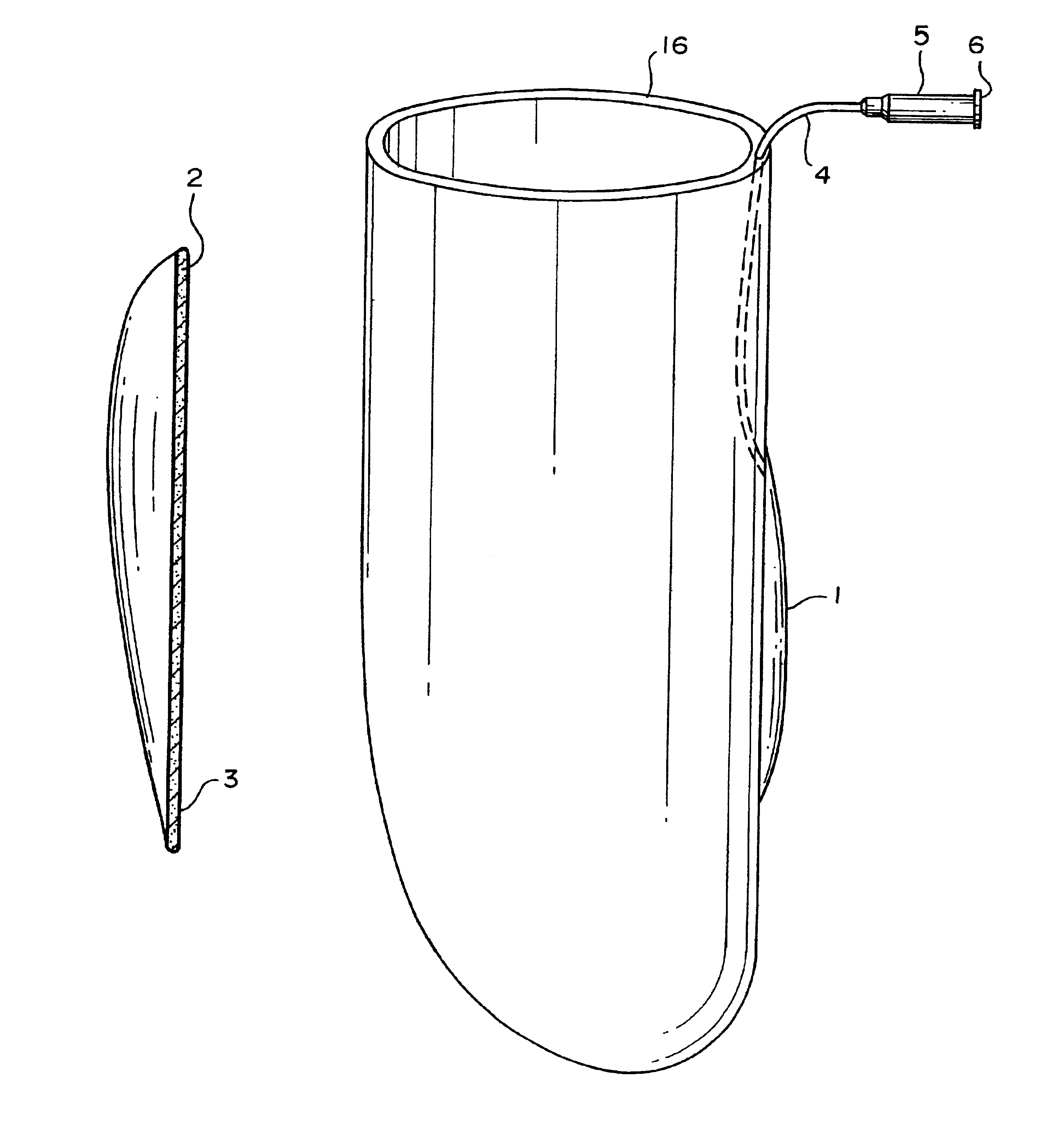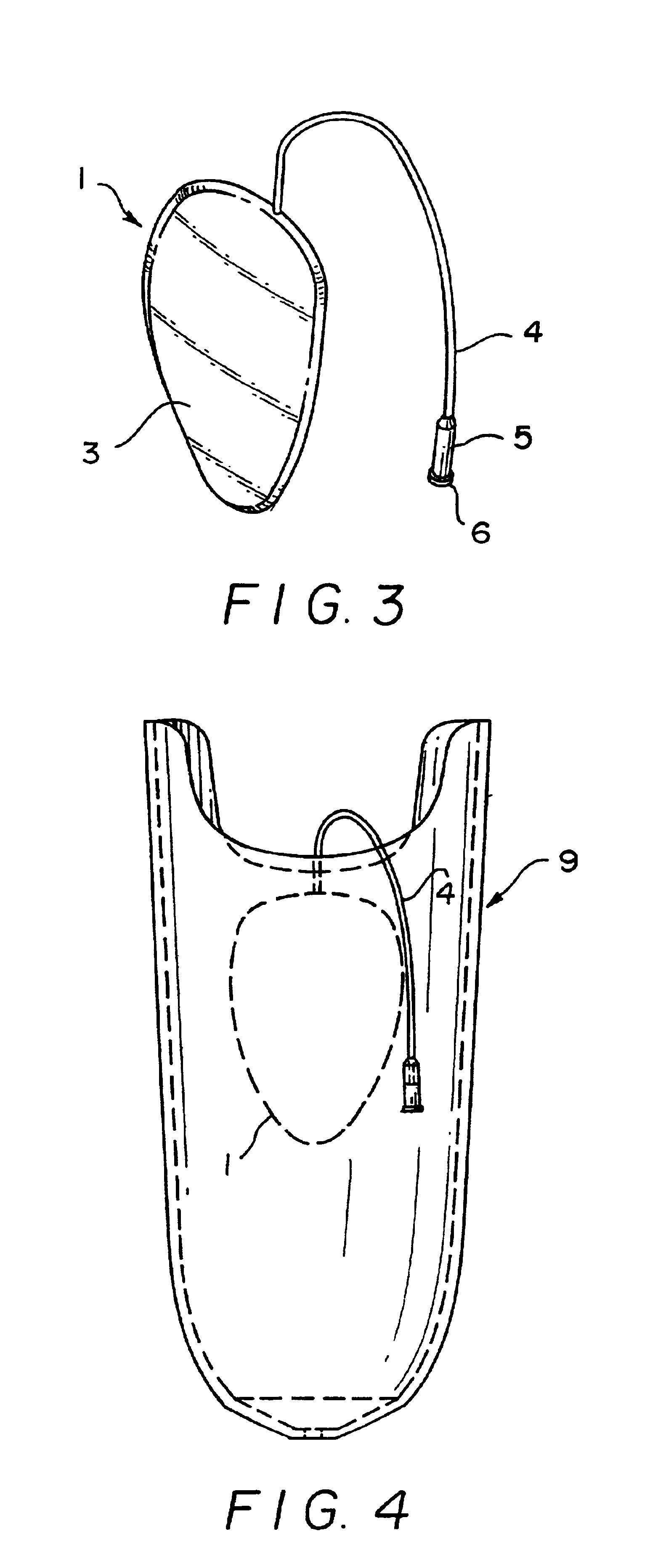Artificial limb socket containing volume control pad
a technology of volume control pad and artificial limb, which is applied in the field of artificial limbs, can solve the problems of difficult to obtain a good fit around the residual limb, difficulty in obtaining a good fit, and obvious cost of approach, and achieve the effects of convenient addition, preventing evaporation, and expanding the volume of sap material
- Summary
- Abstract
- Description
- Claims
- Application Information
AI Technical Summary
Benefits of technology
Problems solved by technology
Method used
Image
Examples
Embodiment Construction
[0029]In a preferred embodiment the SAP particles are incorporated within the cells of an open-cell polymeric foam. The particles may be incorporated into the open cells of the foam during the polymeric foam forming process according to known techniques. Any polymeric material capable of forming open-cell foam according to known procedures may be used in this invention. A preferred foam is silicone foam.
[0030]Super absorbent polymer or SAP is a well known class of polymeric material which absorbs a large amount of water (e.g., 20 times the weight of the polymer) to form a viscous gel material. Such materials are well known to those skilled in the art.
[0031]Super absorbent polymer is generally a water-insoluble but water-swellable polymeric substance capable of absorbing water in an amount which is at least 10 times the weight of the substance in its dry form. In one type of super absorbent material, the material is described chemically as having a backbone of natural or synthetic po...
PUM
 Login to View More
Login to View More Abstract
Description
Claims
Application Information
 Login to View More
Login to View More - R&D
- Intellectual Property
- Life Sciences
- Materials
- Tech Scout
- Unparalleled Data Quality
- Higher Quality Content
- 60% Fewer Hallucinations
Browse by: Latest US Patents, China's latest patents, Technical Efficacy Thesaurus, Application Domain, Technology Topic, Popular Technical Reports.
© 2025 PatSnap. All rights reserved.Legal|Privacy policy|Modern Slavery Act Transparency Statement|Sitemap|About US| Contact US: help@patsnap.com



